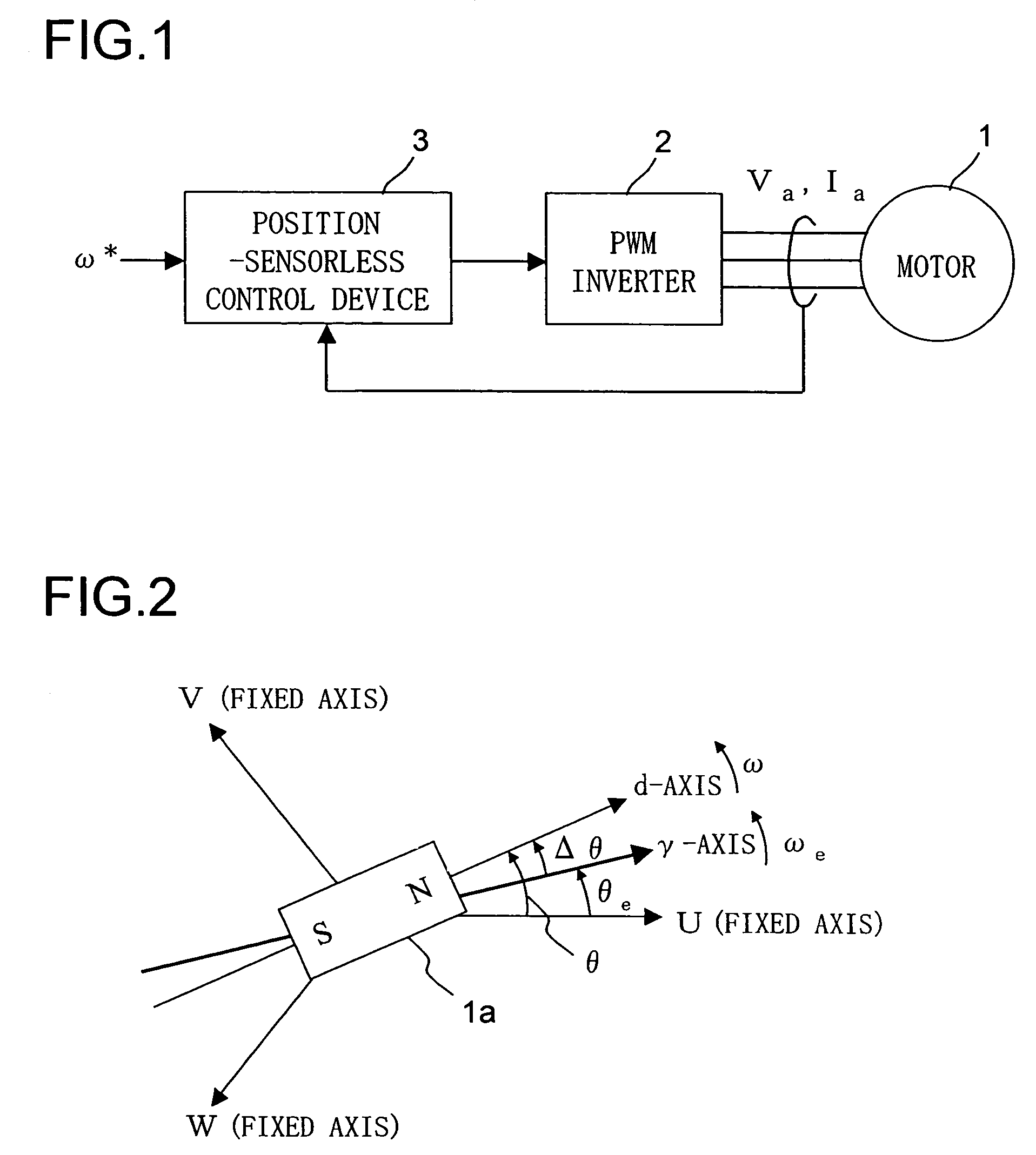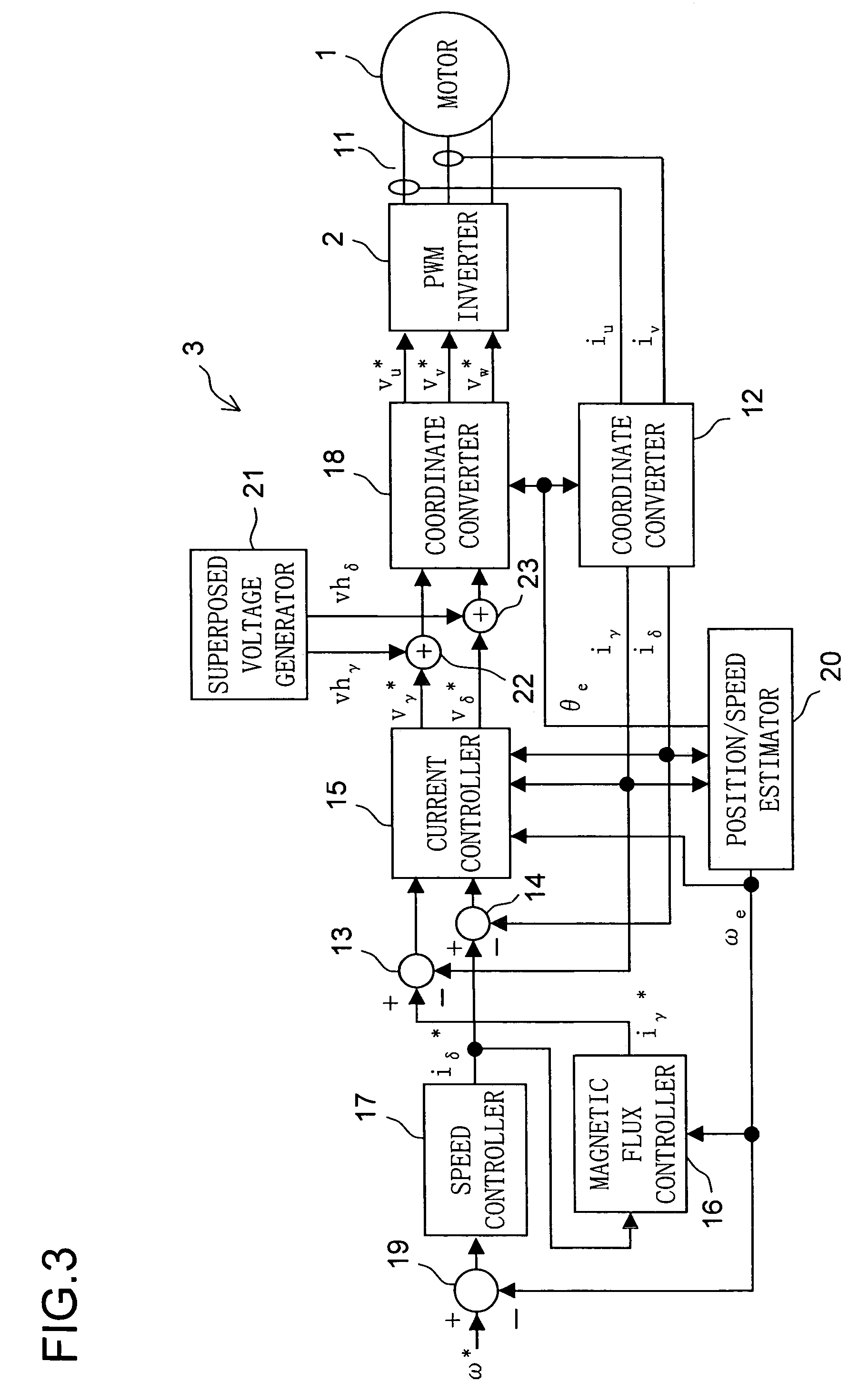Position-sensorless motor control device
a technology of motor control and sensor, which is applied in the direction of motor/generator/converter stopper, electronic commutator, dynamo-electric converter control, etc., can solve the problems of complex processing of extracted signals, and achieve the effect of small computational operation and simple processing
- Summary
- Abstract
- Description
- Claims
- Application Information
AI Technical Summary
Benefits of technology
Problems solved by technology
Method used
Image
Examples
first embodiment
[0050]A first embodiment of the present invention will be described in detail below. FIG. 1 is a block configuration diagram of a motor drive system to which the present invention is applied. Reference numeral 1 represents a three-phase, permanent-magnet, synchronous motor 1 (hereinafter also referred to simply as “motor 1”) that has a permanent magnet on the rotor (unillustrated) thereof and that has an armature winding on the stator (unillustrated) thereof. The motor 1 may be a salient-pole motor (a motor having a salient pole) or a non-salient-pole motor (a motor having no salient pole). The operation with a non-salient-pole motor will be discussed later and until then the following description mainly deals with a case where the motor 1 is a salient-pole motor (for example, an interior-permanent-magnet synchronous motor).
[0051]Reference numeral 2 represents a PWM (pulse-width modulation) inverter, which feeds the motor 1 with a three-phase alternating-current voltage, in U, V, an...
second embodiment
[0097]Next, a second embodiment of the present invention will be described in detail. FIG. 18 is a detailed configuration block diagram of the motor drive system of the second embodiment. The motor drive system of the second embodiment is composed of a motor 1, an inverter 2, and a position-sensorless control device 3a. The position-sensorless control device 3a here differs from the position-sensorless control device 3 shown in FIG. 3 in that the superposed voltage generator 21 and the adders 22 and 23 of the latter are replaced with a superposed current generator 24 and adders 25 and 26, and that the position / speed estimator 20, the current controller 15, and the coordinate converter 18 provided in the latter are replaced with a position / speed estimator 20a (hereinafter also referred to simply as “estimator 20a”), a current controller 15a, and a coordinate converter 18a, respectively. In other respects, the position-sensorless control device 3a here has basically the same configura...
PUM
 Login to View More
Login to View More Abstract
Description
Claims
Application Information
 Login to View More
Login to View More - R&D
- Intellectual Property
- Life Sciences
- Materials
- Tech Scout
- Unparalleled Data Quality
- Higher Quality Content
- 60% Fewer Hallucinations
Browse by: Latest US Patents, China's latest patents, Technical Efficacy Thesaurus, Application Domain, Technology Topic, Popular Technical Reports.
© 2025 PatSnap. All rights reserved.Legal|Privacy policy|Modern Slavery Act Transparency Statement|Sitemap|About US| Contact US: help@patsnap.com



